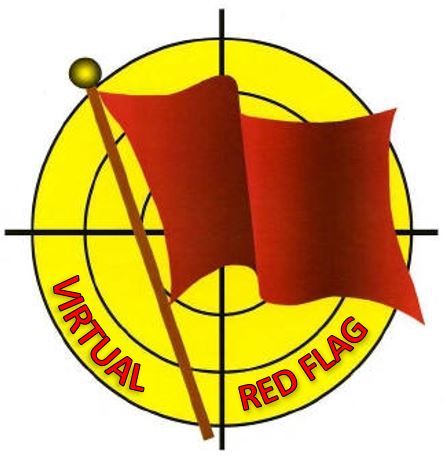vRF-briefing
Wellcome to the virtual Red Flag pages hosted by the spanish squadron GV5JS. Virtual Red Flag offers to the participants the oportunity to fly composite attack force missions in DCSW. The exercise provides an scenario where the virtual pilot is exposed to the complexities of planning, briefing and executing a COMAO.
The main objective is to execute composite operations as in the real Red Flag, to the extend that it is possible inside a simulation. In short, the vRF aims for training and development of knowledge and leadership skills, necessary to conduct a multirol air tactical mission.
A similar programme, named virtual TLP, has been hosted by the GV5Js since 2018 using Falcon BMS. After three successful editions, the vTLP staff has decided to also offer the course in DCSW. Due to the availability of the Nevada Test and Training Range (NTTR), the exercise is called virtual Red Flag, and the headquarters are based at Nellis AFB.
Blue forces will execute different specific missions, such as air interdiction, OCA strikes, dynamic targeting, defensive counter air, among others. Targets are defended by a variety of Red force ground and air threats to give participant aircrews a challenging combat training mission.
The Red force threats includes other human virtual fighter pilots flying as agressors that try to replicate the tactics and techniques of potential adversaries to Blue forces.
UPDATE.
vRF staff has decided to introduce the following changes:
- vRF will be developed using DCS Liberation dynamic campaign engine.
- Red flights will not include human pilots as result. OPFOR will managed completely by the DCS Liberation engine.
Course length and start/finish of course.
A flight takes place every two weeks. A normal course can have 3 or 4 students so, the duration of the course is around 8 working weeks.
Course target audience.
DCSW is a high fidelity air combat simulator that allows for flying combat missions with procedures and tactics very close to real life. Therefore, the course is intended for students fully committed to do the job and with good teamwork skills. This is not a weapon school so all participants, students or not, must have a deep knowledge of the chosen platform. That is, beeing what usually squadrons call Combat Ready or Mission Qualified. In this sense, acceptance priority is for squadrons that present at least one student with its corresponding evaluator. Submitted applications for support personel role (ATC/GCI) and/or red pilots will be appreciated.
Each student will fly as Mission Commander at least in one mission, and will get a grade (Qualified/Not Qualified), at the end of the course.
Allowable DCSW platforms include F16, F18, F14 and A10C and Mirage 2000C. Additionally, a limited number of slots for support personnel are also available including GCI and ATC
Course composition.
The optimum composition of a COMAO course is as follows:
18-24 participants:
- 10-12 A-G
- 6-8 A-A
- 2-4 SEAD
Support:
- 1 ATC
- 1 GCI
Lectures
- COMAO Concept and Doctrine
- Mission commander duties
- COMAO Mission Planning (The four Ts)
- How to read the ATO
- Precision Guided Munitions Attack Planning
- Collateral Damage
- Close Air Support
- Strike Coordination and Armed Reconnaissance
- Dynamic Targeting
- IADS
- Supression of Enemy Air Defence
- Force Protection
- Current operations Briefings
Exercises and Practice
- FAM: familiarization on operating in NTTR. Objectives:
- Nellis local procedures
- Flex Turnout departure
- AAR
- PUSH time practice for RTB (ARCOE)
- VFR recovery
- Touch & go and final full stop landing
- COMAO Planning Exercise 1
- COMAO Planning Exercise 2
- COMAO Planning Exercise 3
- COMAO Planning Exercise 4
